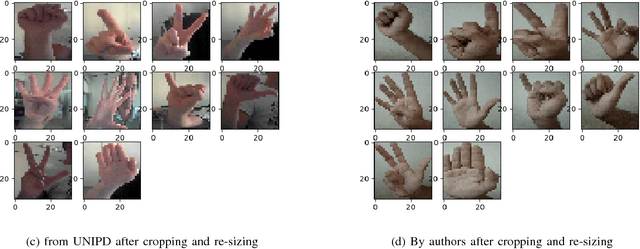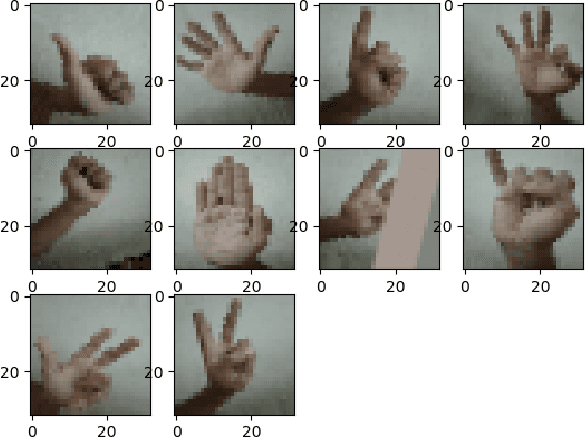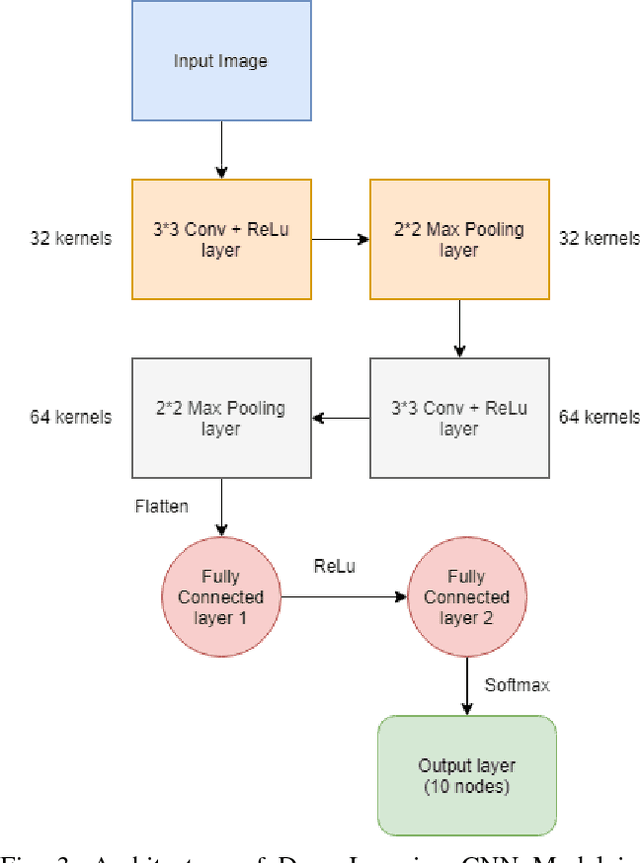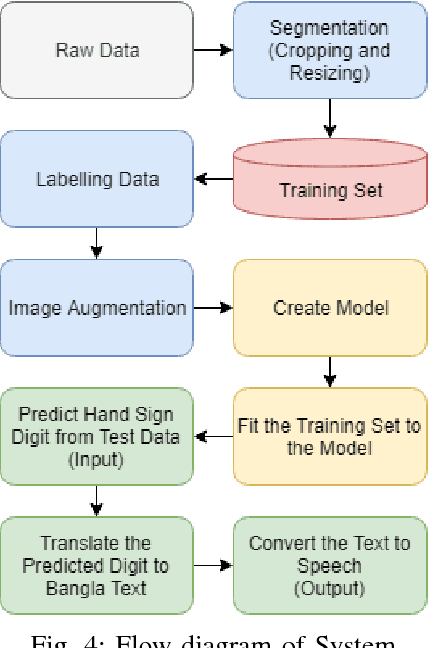Md. Rafiqul Islam
Hand Sign to Bangla Speech: A Deep Learning in Vision based system for Recognizing Hand Sign Digits and Generating Bangla Speech
Jan 17, 2019



Abstract:Recent advancements in the field of computer vision with the help of deep neural networks have led us to explore and develop many existing challenges that were once unattended due to the lack of necessary technologies. Hand Sign/Gesture Recognition is one of the significant areas where the deep neural network is making a substantial impact. In the last few years, a large number of researches has been conducted to recognize hand signs and hand gestures, which we aim to extend to our mother-tongue, Bangla (also known as Bengali). The primary goal of our work is to make an automated tool to aid the people who are unable to speak. We developed a system that automatically detects hand sign based digits and speaks out the result in Bangla language. According to the report of the World Health Organization (WHO), 15% of people in the world live with some kind of disabilities. Among them, individuals with communication impairment such as speech disabilities experience substantial barrier in social interaction. The proposed system can be invaluable to mitigate such a barrier. The core of the system is built with a deep learning model which is based on convolutional neural networks (CNN). The model classifies hand sign based digits with 92% accuracy over validation data which ensures it a highly trustworthy system. Upon classification of the digits, the resulting output is fed to the text to speech engine and the translator unit eventually which generates audio output in Bangla language. A web application to demonstrate our tool is available at http://bit.ly/signdigits2banglaspeech.
Machine Learning Approaches for Modeling Spammer Behavior
Aug 25, 2010



Abstract:Spam is commonly known as unsolicited or unwanted email messages in the Internet causing potential threat to Internet Security. Users spend a valuable amount of time deleting spam emails. More importantly, ever increasing spam emails occupy server storage space and consume network bandwidth. Keyword-based spam email filtering strategies will eventually be less successful to model spammer behavior as the spammer constantly changes their tricks to circumvent these filters. The evasive tactics that the spammer uses are patterns and these patterns can be modeled to combat spam. This paper investigates the possibilities of modeling spammer behavioral patterns by well-known classification algorithms such as Na\"ive Bayesian classifier (Na\"ive Bayes), Decision Tree Induction (DTI) and Support Vector Machines (SVMs). Preliminary experimental results demonstrate a promising detection rate of around 92%, which is considerably an enhancement of performance compared to similar spammer behavior modeling research.
 Add to Chrome
Add to Chrome Add to Firefox
Add to Firefox Add to Edge
Add to Edge